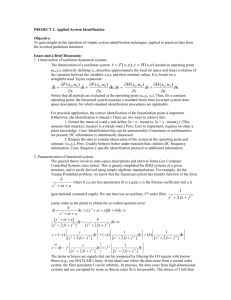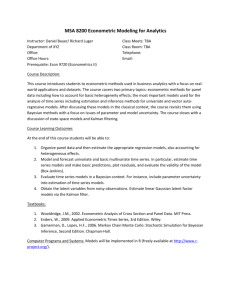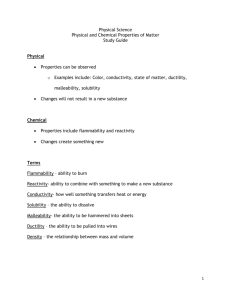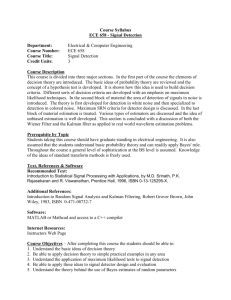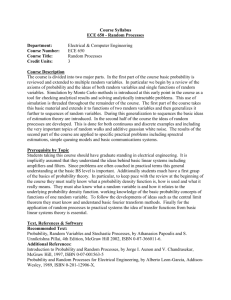Jerome Frutiger Abstract CAPE15
advertisement
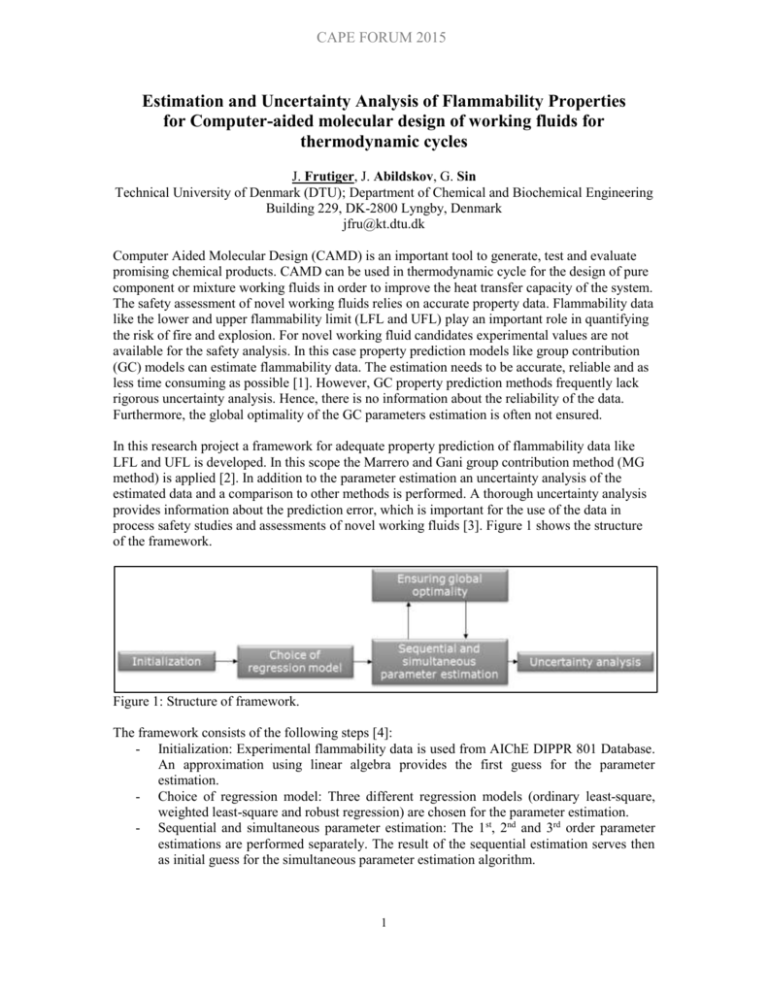
CAPE FORUM 2015 Estimation and Uncertainty Analysis of Flammability Properties for Computer-aided molecular design of working fluids for thermodynamic cycles J. Frutiger, J. Abildskov, G. Sin Technical University of Denmark (DTU); Department of Chemical and Biochemical Engineering Building 229, DK-2800 Lyngby, Denmark jfru@kt.dtu.dk Computer Aided Molecular Design (CAMD) is an important tool to generate, test and evaluate promising chemical products. CAMD can be used in thermodynamic cycle for the design of pure component or mixture working fluids in order to improve the heat transfer capacity of the system. The safety assessment of novel working fluids relies on accurate property data. Flammability data like the lower and upper flammability limit (LFL and UFL) play an important role in quantifying the risk of fire and explosion. For novel working fluid candidates experimental values are not available for the safety analysis. In this case property prediction models like group contribution (GC) models can estimate flammability data. The estimation needs to be accurate, reliable and as less time consuming as possible [1]. However, GC property prediction methods frequently lack rigorous uncertainty analysis. Hence, there is no information about the reliability of the data. Furthermore, the global optimality of the GC parameters estimation is often not ensured. In this research project a framework for adequate property prediction of flammability data like LFL and UFL is developed. In this scope the Marrero and Gani group contribution method (MG method) is applied [2]. In addition to the parameter estimation an uncertainty analysis of the estimated data and a comparison to other methods is performed. A thorough uncertainty analysis provides information about the prediction error, which is important for the use of the data in process safety studies and assessments of novel working fluids [3]. Figure 1 shows the structure of the framework. Figure 1: Structure of framework. The framework consists of the following steps [4]: - Initialization: Experimental flammability data is used from AIChE DIPPR 801 Database. An approximation using linear algebra provides the first guess for the parameter estimation. - Choice of regression model: Three different regression models (ordinary least-square, weighted least-square and robust regression) are chosen for the parameter estimation. - Sequential and simultaneous parameter estimation: The 1st, 2nd and 3rd order parameter estimations are performed separately. The result of the sequential estimation serves then as initial guess for the simultaneous parameter estimation algorithm. 1 CAPE FORUM 2015 - - Ensuring global optimality: Four different minimization/search algorithms ensure global optimality (Levenberg–Marquardt algorithm, Trust-region reflective algorithm, Simplex algorithm, Pattern search optimization). Uncertainty: A rigorous uncertainty analysis that includes asymptotic approximation of covariance matrix for parameter estimators is performed in order to provide information of the model prediction quality (95% confidence interval). The statistical outliers of the model are analyzed and a change of model structure for those compounds is suggested. In conclusion, the MG method is an efficient tool for the prediction of flammability data. A thorough uncertainty analysis provides information about the prediction error, which is important for the use of the data in safety assessments for CAMD. [1] P. Harper, R. Gani, P. Kolar, T. Ishikawa: Computer-aided molecular design with combined molecular modeling and group contribution, 1998. Fluid Phase Equilibria, 158–160, 337–347. [2] J. Marrero, R. Gani: Group-contribution based estimation of pure component properties, 2001. Fluid Phase Equilibria 183–184, 183–208. [3] A. Hukkerikar, B. Sarupb, A. Kate, J. Abildskov, G. Sin, R. Gani: Group-contribution+ (GC+) based estimation of properties of pure components: Improved property estimation and uncertainty analysis, 2012. Fluid Phase Equilibria, 321, 25– 43. [4] J. Frutiger, J. Abildskov, G. Sin: Estimation and Uncertainty Analysis of Flammability Properties of Chemicals using Group-Contribution Property Models, Proceedings of the 25rd European Symposium on Computer Aided Process Engineering – ESCAPE 25, Elsevier Science, 2014, submitted. 2



